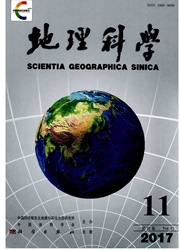

 中文摘要:
中文摘要:
在横山县朱家沟小流域采集111个样点,分析土壤属性与地形因子相互关系,进行空间预测分析。结果表明:土壤密度与复合地形指数CTI显著正相关,土壤有机质与复合地形指数CTI、汇流动力指数SPI、沉积物运移指数STI显著负相关,全磷只与坡度β显著负相关。多元线性逐步回归模型对于土壤密度和有机质拟合较好,而对于全磷,预测结果较差;回归-克里格预测有效地减小了残差,消除了平滑效应,预测极差更宽,对于局部的变异及地形、土地利用的关系体现更为细化,提高了预测精度。
 英文摘要:
英文摘要:
Analysis and forecast on the spatial distribution and dynamics of soil properties is an important element of sustainable land management. Topography and land use are key factors which affect soil properties variability on catchment scale in the loess hilly area. Correlation analyses were carried out between soil properties (include bulk density(BD), soil organic matter (SOM) and total phosphorus (TP)) and terrain attributes. Finally, terrain attributes and land use types were used to predict spatial distribution of soil properties by multiple-linear regression analysis and regression-Kriging, based on data from 111 points in Zhujiagou catchment; Hengshan County of Shaanxi Province. Results indicated that there is a positive correlation between bulk density and compound topographic index (CTI) ; and a negative correlation between SOM and compound topographic index (CTI), stream power index(SPI) and sediment transport index (STI) ; and a significant negative correlation was found between TP and slope(β). The correlations between these terrain attributes and soil properties reflected to some degree that soil develops in response to the way water flows through and over the landscape. The regression model for BD had the highest R^2 value, followed by SOM and TP. The regression model was precise for the BD, but the variation is rather large and there was a high smoothing effect on the predicted values. For TP, the predicted result is very poor. Such techniques may be applied as a frist step in unmapped areas to guide soil sampling and model development. In order to explain the variations better, combined step-wlse regression and residuals interpolated using Kriging was conducted. The results showed that regression-Kriging improved accuracy of prediction.
 同期刊论文项目
同期刊论文项目
 同项目期刊论文
同项目期刊论文
 期刊信息
期刊信息
